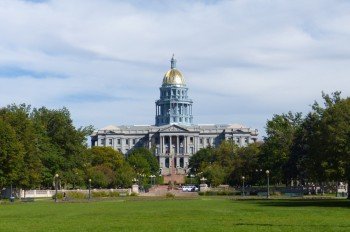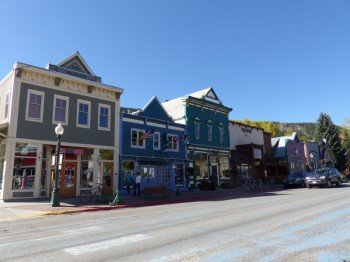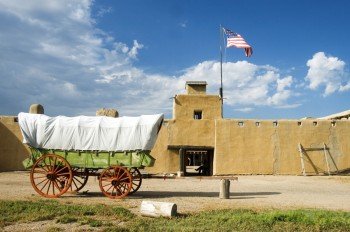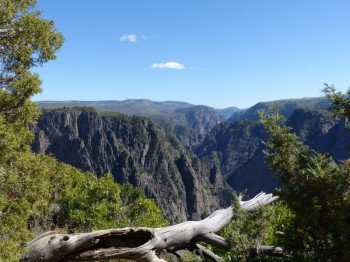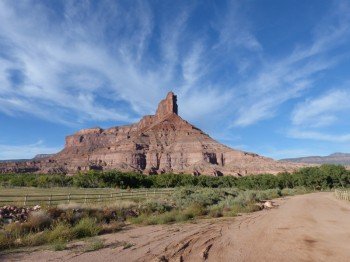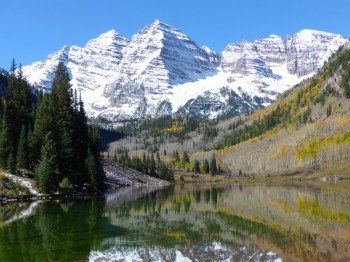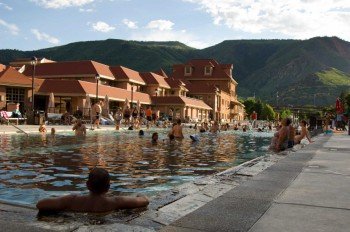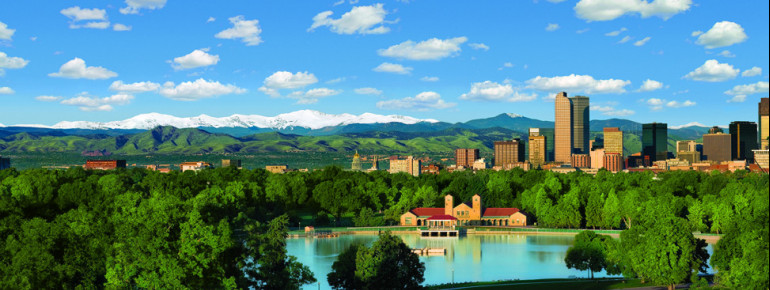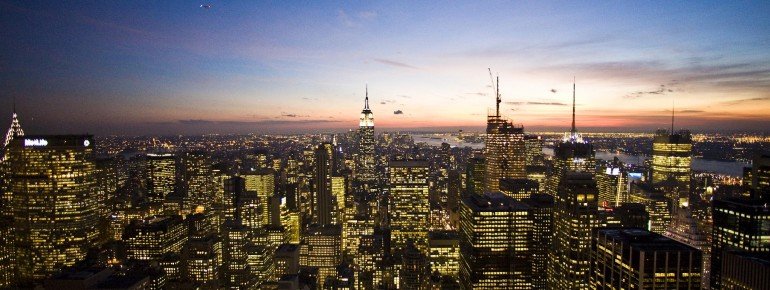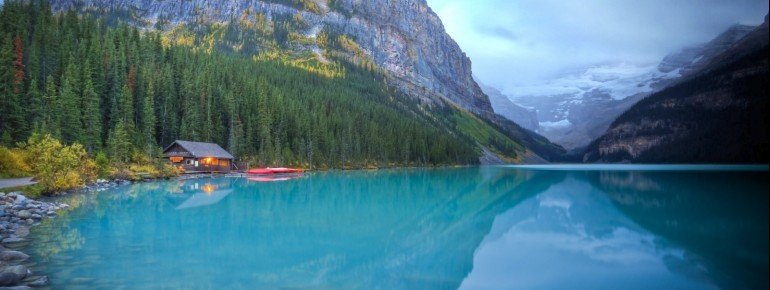Colorado is the highest situated state in the USA. With a variety of landscapes, from plains to the Rocky Mountains and canyons, as well as many charming cities, the state in the heart of America is one that inspires. Especially in autumn, when the aspens turn golden and the woods seem to stretch out endlessly, you will see nature from its nicest side. We have put together for you ten travel tips for the “Centennial State“.
Denver – Mile High City
For most people, a trip to Colorado begins in the capital Denver, which, thanks to the international Airport, is easily accessible. Founded in 1858 as a base camp for gold diggers, Denver is today a city of three million inhabitants. Also called Mile High City, it lays at a height of one mile, 1.609 meters. Some of the sights are the Colorado State Capitol, the newly renovated Union Station, and Larimer Square. Art lovers can also visit the Denver Art Museum which, beside its manifold art collection, is also architecturally worth seeing. In Denver city it becomes clear why the residents of Colorado are known to be sports and outdoor enthusiasts. Most people travel around the city by foot. In the famous shopping street 16th Street Mall, a two kilometer long pedestrian zone, there is only a shuttle bus which operates free of charge. Additionally, you can find a number of bike sharing stations to discover the city on wheels. Colorado is also known as the “Beer state” of the United States. In Denver's hip quarter Lower Highlands, you can find numerous breweries side by side that produce their own Craft Beer.
Boulder – Between Plains and Mountains
Alongside its capital, Colorado has also a number of smaller, charming cities that are worth paying a visit. One of them is Boulder, about 30 miles north-west of Denver. The iconic Flatirons, which remind of ranged flat irons sit enthroned over this city. Here, you can see the scenic diversity of Colorado. While the flat Great Plains stretch out to the east of the city, the impressive Rocky Mountains raise up high to the west. You can best experience this contrast during a hike along the Colorado Chautauqua, which starts a little further up of the center. The city itself is known as one of the happiest and healthiest in the USA. Its population was the very first to pay a Carbon Dioxide tax back in 2007. Also, a restriction is in place that forbids any new buildings or constructions in an area more than three times the size of the city itself. Instead of car parks in front of the shops, some spaces are merely reserved for bicycles. What is more, some of the restaurants are multiple award winners.
Crested Butte – Great Cuisine and Artists
Further west and in the midst of the Rocky Mountains lays Crested Butte, the home of the artists. The historic buildings in Downtown now house numerous galleries. The Victorian buildings with their vivid fassades and special charm invite you to take a stroll around. In spring time, the meadows surrounding the city turn into a colorful sea of flowers, which is the reason Crested Butte is also known as the “Wildflower Capital”. But nature also inspires on the kitchen plate: The concept “Farm to Table” is well-known in this region. It is worth being in town on a Sunday, when you can take a stroll over the weekly market and shop some delicious regional produce. Another popularity is the Montanya Rum, which is produced in Crested Butte and has won multiple awards. All that is used for its production is water from the mountains, yeast, sugarcane and honey from the hills.
Telluride – Tracing the Gold Diggers
Like Crested Butte, Telluride too was founded during the gold and silver rush in the 19th century. On a tour to the old mines you experience a trip to the past. You can either hike, or take part in a jeep tour. The five mile long Tomboy Road winds from the village to the top in numerous bends. The unpaved road was formerly two-laned, which is hard to imagine today, as it is very narrow. At the roadside you will often see mine entrances and tracks or huts. After about 3.4 miles you will get to the Smuggler's Union Mine, where merely the ruins of a freight train remind of earlier times. A further mile along you will reach Tomboy. 1.200 people live here on a height of 3.500 meters – exposed to nature and the hard life of the mine. The leftovers of buildings attest to the bygone time. On wooden benches and the remnants of the walls, you can still see early belongings of the inhabitants, such as shoes, spades or glasses.
La Junta – „The Castle of the Prairie“
In the 19th century, Colorado was situated at the border to Mexico. One of the most important outposts at the time was Bent's Old Fort near La Junta, as this was located on the important Santa Fe Trail. The fort served as a resting and trading place. Travellers could top up their tuckerbags or have their horse-carriages repaired. It was the meeting point for Mexican traders, Indians from various tribes and Anglo-American fur trappers. Although the fort had been destroyed at the end of the 19th century under circumstances still unknown, it was reconstructed and rebuilt by hand with help of historical plans in the 1970s. Today you will again find the mud-brick construction, appearing like a castle in the midst of the prairie. If you visit the old fort, you will be catapulted back into the past. You will meet fur trappers and watch blacksmiths and carpenters at work.
Mesa Verde – A Unique Cultural Heritage
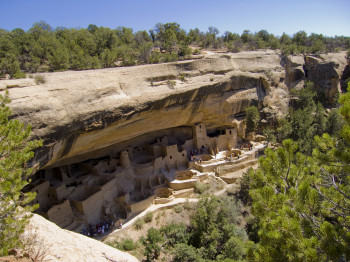
The history of Colorado's inhabitants, though, reaches back a whole lot further! In the Mesa Verde National Park, between Durango and Cortez in the Southwest of the state, you can visit witnesses of this time. Anasazi Indians lived here for 700 years, beginning in the year 550 after Christ. For most of the time they lived at the summit level of the Table Mountains. In the last 75 to 100 years, however, they created unique cliff dwellings: They carved settlements for up to 100 people in the mountain rocks beneath the high plateau. On your trip you can still visit five of them, however some of them only on a guided tour. Part of the around 5.000 sites found in the park are also constructions from different times, such as pit houses from the seventh century. The UNESCO valuated the national park as worthy of special protection: Mesa Verde was among the first sites declared as world heritage in 1979.
Black Canyon of the Gunnison – Deep, Narrow and Steep
Mesa Verde is the most famous among the four Colorado national parks. More like an insider's tip on the other hand is Black Canyon of the Gunnison. It harbors a special natural spectacle: No other canyon in North America is this deep, narrow and steep at the same time. In some places the canyon measures a width of only 2,000 feet, but a depth of up to 2,730 feet. The walls seem to be almost black at the shore of the Gunnison, which has been forming this canyon for the past two million years. The river exhibits an average gradient of 96 feet per mile, which is how it could develop such a strong current. You can discover the park in a variety of ways: you can either drive to the different viewing platforms, or do a hiking tour. The Gunnison is also attractive for fishing and kayaking, but for the latter you should be experienced enough to deal with the strong current. Do not miss the viewing point Painted Wall, which, with its 2,264 feet, is the highest vertical rock face in Colorado.
Gateway – Recreating in Isolation
Expect more impressive rocks in Gateway, a rather untouched part of the earth in western Colorado, directly at the border to Utah. Particularly eye-catching is Palisade Rock, where you can also go climbing. The area is characterized by red sandstone canyons. In fact, efforts are being made to declare this scenery as a national park. You can discover the La Sal Mountains and Uncompahgre National Forest by foot or bicycle. Dolores River also offers the possibility to do rafting. A good place to go for all these activities is Gateway Canyon. Formerly, there were only a gas station and a small shop here, until Jon Hendricks, the founder of the Discovery Channel, opened up a hotel. He wanted to create a place where people could discover nature for themselves. The Adventure Center of the hotel offers cylce tours, car and quad rental as well as hiking and climbing tours.
Aspen – In the Face of the Fourteeners
The Maroon Bells near Aspen have become world famous and one of the most photographed motives in the United States. As only two of more than fourteeners, they reach 14,163 and 14,019 feet up into the sky over the Maroon Valley. At the foot of the mountains and around Maroon Lake in the White River National Forest you will find a lot of beautiful walking paths. Particularly in autumn, when the tips of the mountains are covered in snow and the aspens shine brightly in red, yellow and orange, this landscape is absolutely stunning. Nearby Aspen is a shimmering mountain village, that is also known for its skiing regions and the many celebrities, who often spend their freetime here.
Glenwood Springs – Relaxing in Mineral Baths
Because Colorado offers so many possibilities for an activity holiday, relaxation must play a part, too. The best option to relax is one of the thermal baths. The most popular one is Glenwood Hot Springs. It has the largest outdoor pool in the world, supplied with thermal spring water. The pool measures over 330 feet in length! Already the Ute-Indians knew about its healing effect and went on a yearly pilgrimage to this spring. The pool itself was opened in 1888 and the accompanying red brick stone building still exists in its original form today. While you are taking your bath, you can admire not only the building, but also the beautiful nature, as the surrounding mountains seem to be within your reach. As both pools – there is also a therapy pool – are open all year round, you can enjoy the warmth of the healing water as well, when the surrounding mountains are covered in snow.












